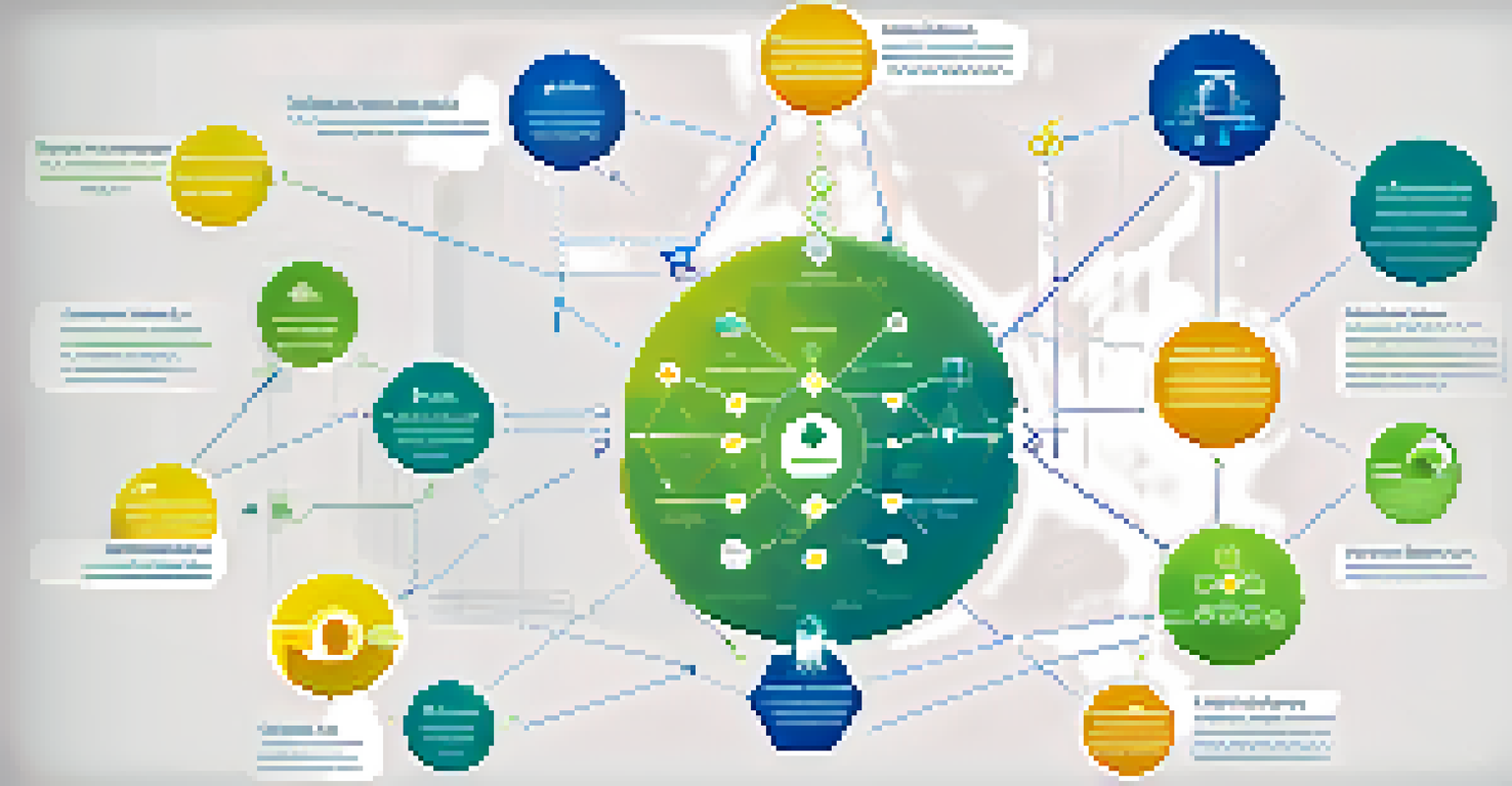How to Get Started with Decentralized Content Distribution

Understanding Decentralized Content Distribution
Decentralized content distribution is a method that eliminates the need for a central authority to manage content. Instead, it relies on a network of nodes that share and store information collectively. This approach can enhance privacy and security, making it appealing in today's digital landscape.
The future of content is decentralized. It’s about giving power back to creators and users, enabling them to connect directly without intermediaries.
Imagine a library where every book is owned by different people, and anyone can borrow or lend freely. This concept mirrors decentralized systems, where each participant contributes to the overall functioning. By removing intermediaries, content can reach audiences more directly and efficiently.
As we explore this topic, consider how decentralized content distribution can empower creators and users alike. It fosters a sense of community, allowing for diverse voices to be heard without censorship or control from a single entity.
The Benefits of Decentralized Content Distribution
One of the primary advantages is increased security. With no central point of failure, decentralized networks are less vulnerable to hacks or attacks. This means that your content remains safe and accessible, even if one part of the network goes down.

Another benefit is improved access and reach. Decentralized platforms often allow anyone to participate, breaking down barriers that traditional systems impose. This inclusivity means that content can spread organically across various networks, reaching a wider audience.
Decentralization Enhances Security
Decentralized content distribution reduces vulnerability to hacks by eliminating a central point of failure.
Lastly, decentralized content distribution promotes transparency. Users can see where the content originates and how it’s shared, which builds trust. This openness is vital in an age where misinformation can spread rapidly through centralized channels.
Choosing the Right Decentralized Platform
When considering decentralized platforms, think about your specific needs. There are various options available, such as IPFS (InterPlanetary File System) for storage or blockchain-based platforms for content sharing. Each has its unique features and caters to different types of content.
In a decentralized world, the strength of the network is in its diversity and the freedom of its participants.
For example, if you're a video creator, you might explore platforms like DTube or PeerTube, which allow for video hosting without central control. They not only give you a platform but also enable your audience to engage without restrictive policies.
Take your time to research and experiment with different platforms. Look for user-friendliness, community support, and the ability to scale as your content grows. Choosing the right platform can significantly impact your content distribution strategy.
Creating Quality Content for Decentralized Platforms
Quality content is crucial, regardless of the distribution method. Focus on creating engaging, valuable material that resonates with your audience. Think about what makes your content unique and how it can stand out in a decentralized environment.
Consider storytelling techniques to connect with your audience emotionally. People are more likely to share content that they find compelling or relatable. Incorporating personal anecdotes or case studies can enhance the connection and encourage organic sharing.
Wider Reach and Inclusivity
Decentralized platforms break down barriers, allowing diverse voices and content to spread organically across networks.
Lastly, don't forget about optimization. While decentralized platforms may differ from traditional ones, using relevant keywords and tags can help your content become more discoverable. This strategic approach can amplify your reach within decentralized networks.
Engaging Your Audience in a Decentralized Space
Engagement is key to building a loyal audience in any content distribution model. Utilize social media, forums, and community groups to interact with your audience. Encourage discussions and feedback to foster a sense of belonging and investment in your content.
Think of your audience as collaborators rather than just consumers. In a decentralized environment, their input can help shape your content and guide future topics. This collaborative approach can enhance your content's relevance and strengthen your community.
Don't shy away from leveraging decentralized tools for engagement. Platforms often provide unique features, such as voting mechanisms or direct feedback options, enabling your audience to have a say in content direction. Such engagement can lead to more meaningful connections.
Challenges in Decentralized Content Distribution
While decentralized content distribution has numerous advantages, it comes with challenges. One significant hurdle is the lack of established standards and protocols. This can create confusion for users who are unfamiliar with how to navigate these platforms effectively.
Additionally, the decentralized nature means that content moderation can be a complex issue. Without a central authority, harmful or misleading content may circulate unchecked, posing a risk to users. Finding a balance between freedom of expression and ensuring safe environments is essential.
Engagement Builds Community Trust
Involving your audience as collaborators fosters a sense of community and enhances the relevance of your content.
Moreover, the learning curve for new users can be steep. As decentralized platforms evolve, keeping up with the latest developments and features is crucial. Providing clear, accessible resources can help users overcome these challenges and make the most of decentralized distribution.
Future of Decentralized Content Distribution
The future of decentralized content distribution looks promising. As technology continues to advance, we may see more innovative platforms that enhance user experience and engagement. This evolution could lead to a more democratized digital landscape where creators have greater control over their work.
Moreover, as users become more aware of privacy and security issues, decentralized options may gain popularity. People are increasingly seeking alternatives to traditional platforms that often monetize their data. This shift could drive more creators and audiences toward decentralized solutions.

Ultimately, the future hinges on community involvement. As users actively participate in shaping these platforms, we can expect a more robust ecosystem that values transparency, accessibility, and creativity in content distribution.